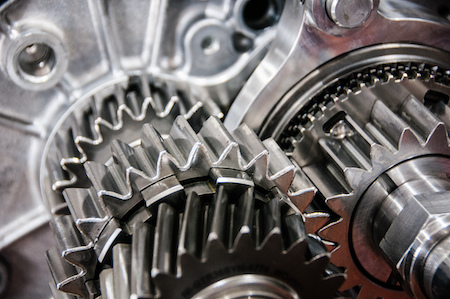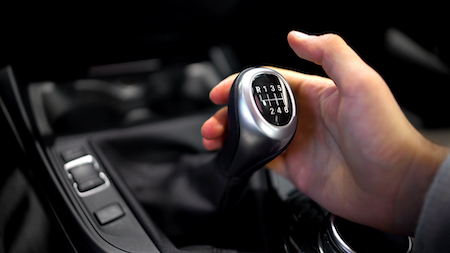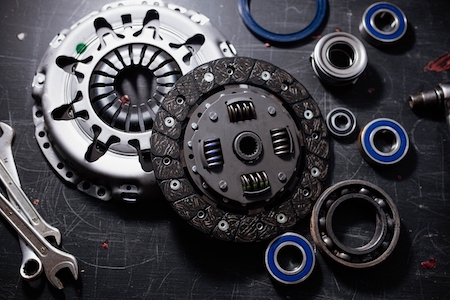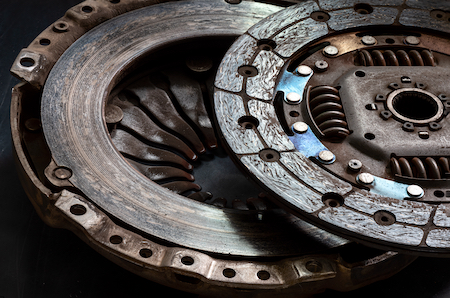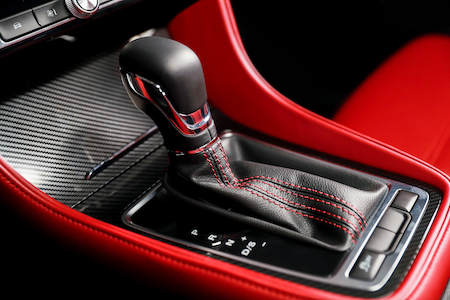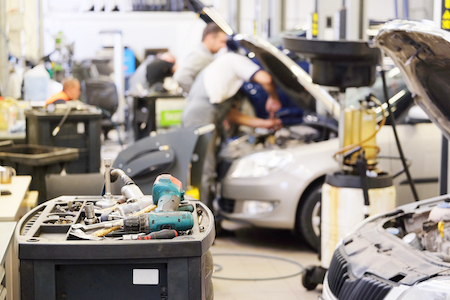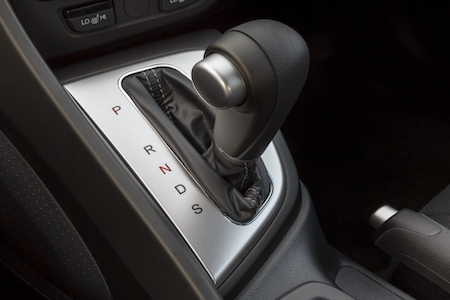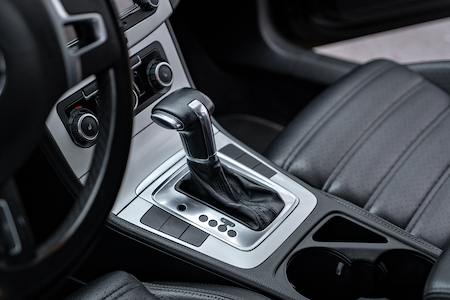Without a transmission, your car wouldn’t go.
It’s a crucial component that transfers the power generated by the engine to the wheels, allowing the vehicle to move at different speeds and handle various driving conditions.
There are two primary types of car transmissions: manual and automatic.
A manual transmission, also known as a “stick shift,” requires the driver to manually engage and disengage gears using a clutch pedal and gear shifter.
The clutch connects and disconnects the engine’s power from the transmission. It consists of a flywheel attached to the engine and a pressure plate attached to the transmission. The clutch pedal is used to engage and disengage the clutch.
The transmission has multiple gears of varying sizes. These gears are organized on parallel shafts: the input shaft (connected to the engine) and the output shaft (connected to the wheels). These devices help match the speed of the gears before engaging them, preventing grinding and damage when shifting.
An automatic transmission removes the need for the driver to manually shift gears by using a hydraulic system to change gears based on vehicle speed and throttle input automatically. A torque converter replaces the clutch in manual transmissions. It transfers engine power to the transmission using hydraulic fluid and a system of vanes.
The core of an automatic transmission, is a planetary gearset consisting of multiple interconnected gears that can achieve different gear ratios. The hydraulic system utilizes pressurized fluid to engage and disengage clutches and bands, controlling gear selection.
Valves direct hydraulic fluid flow, determining which clutches and bands engage, based on inputs such as vehicle speed and throttle position.
Whether you drive a manual or automatic transmission, things can go wrong. What should you do?
What can go wrong with a car transmission and require repair
Cars are complex systems with thousands of parts coming together and creating the vehicle that sits in your garage or driveway today. Likewise, car transmissions are complex mechanical systems, and various issues can arise that may require repair or maintenance. They include:
Transmission Fluid Issues
Low fluid levels can lead to poor lubrication, overheating, and increased friction within the transmission, or contaminated transmission fluid can cause slippage, overheating, and damage to internal components.
Transmission Slipping
This can be caused by worn clutches, bands, or a malfunctioning torque converter.
Gear Shifting Problems
Rough or harsh gear changes can result from issues with the shift solenoids, valve body, or the transmission control module. A delay between shifting gears can indicate problems with the shift solenoids, valve body, or fluid pressure.
Transmission Leaks
Leaks in the transmission system can lead to low fluid levels, causing inadequate lubrication and potential damage to components.
Torque Converter Issues
A malfunctioning torque converter can result in poor power transfer, slipping, overheating, and unusual noises.
Clutch Problems
In a manual transmission, clutch problems such as a worn clutch plate, pressure plate, or release bearing can lead to difficulty in engaging gears.
Transmission Overheating
Overheating can damage transmission fluid and internal components. It can be caused by issues like low fluid levels, blocked cooler lines, or towing heavy loads.
Electrical and Computer Issues
Modern transmissions are controlled by electronic systems. Problems with sensors, solenoids, or the transmission control module can lead to improper shifting, slipping, or other issues.
Torque Sensor Problems
Automatic transmissions often use torque sensors to monitor engine power output. Malfunctions in these sensors can affect gear selection and shifting.
Valve Body Malfunctions
The valve body controls the flow of transmission fluid and determines which clutches and bands engage. Issues with the valve body can result in improper gear engagement, harsh shifting, or slipping.
Physical Damage
Accidents or impacts can cause physical damage to the transmission housing, gears, or other components, leading to various problems.
Fluid Contamination
Contaminants in the transmission fluid, such as debris or metal particles, can accelerate wear on internal components and lead to transmission problems.
Wear and Tear
Over time, normal wear and tear on transmission components can lead to reduced performance and shifting issues.
It’s important to note that transmission issues can vary in severity, and prompt diagnosis and repair are essential to prevent further damage and maintain the safe and reliable operation of your vehicle. If you experience any of these problems or notice unusual behavior in your car’s transmission, it’s advisable to have a qualified mechanic inspect and diagnose the issue.
You have a transmission problem – now what?
Some transmission problems can be repaired. Other issues may reach a severity that requires more extensive fixing. In general, you have several options to move forward:
New Transmission
Installing a new transmission involves replacing the entire transmission unit with a brand-new one. This is typically done with a transmission sourced directly from the vehicle manufacturer or an authorized dealer. Getting a new transmission is a reliable option, as it ensures that all components are brand-new and free from wear or damage. It can be the most expensive option due to the cost of the new unit and the labor required for installation.
Rebuilt Transmission
A rebuilt transmission, sometimes known as a remanufactured transmission, is a unit that has been disassembled, inspected, and rebuilt using new and reconditioned components to bring it back to a like-new condition. The process involves replacing worn or damaged parts, such as clutches, bearings, seals, and gaskets. Rebuilt transmissions are often a cost-effective alternative to new transmissions while still offering reliable performance. They may come with warranties from the manufacturer or remanufacturing facility.
Used Transmission
Opting for a used transmission involves sourcing a transmission from a salvaged or donor vehicle of the same make and model. The used transmission is then installed in your car after any necessary inspections and minor repairs. While this option can be more affordable, there are some risks involved, as the condition of the used transmission might not be fully known. It’s important to work with a reputable supplier and ensure the transmission is thoroughly inspected before installation.
Repaired Transmission
A repaired transmission involves diagnosing the specific issue within your existing transmission and fixing or replacing only the components causing the problem. This can range from repairing a damaged solenoid or valve body to fixing a leaking seal. Repairing a transmission is often the least expensive option, but its viability depends on the extent of the damage and the overall condition of the transmission. It’s essential to work with a skilled mechanic who can accurately diagnose the problem and perform effective repairs.
Have a transmission problem? Which is the best repair route for you?
There isn’t a “right” way of fixing every transmission problem you may encounter. Instead, there are many approaches to ensure your vehicle is safely back on the road.
When deciding which approach to take, factors such as the severity of the transmission problem, your budget, the vehicle’s age and overall condition, and your future plans should all be considered. Consult with a reputable mechanic or transmission specialist who can assess the specific situation and provide guidance on the most appropriate course of action.
Can we help you with your transmission repair questions?

